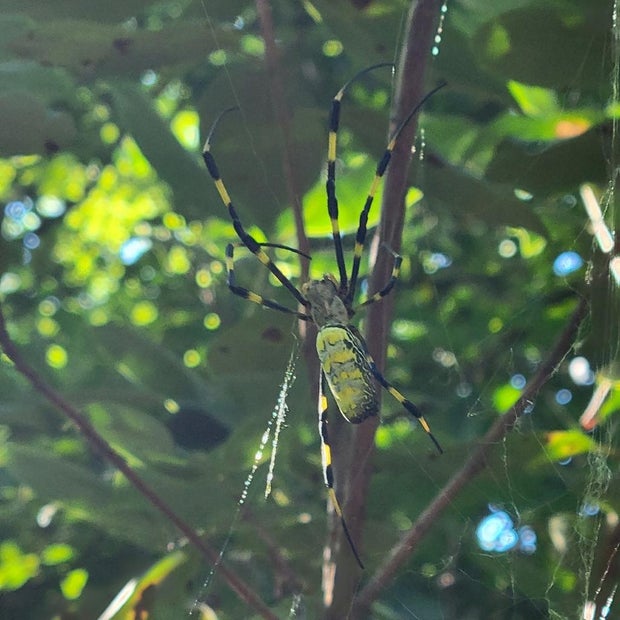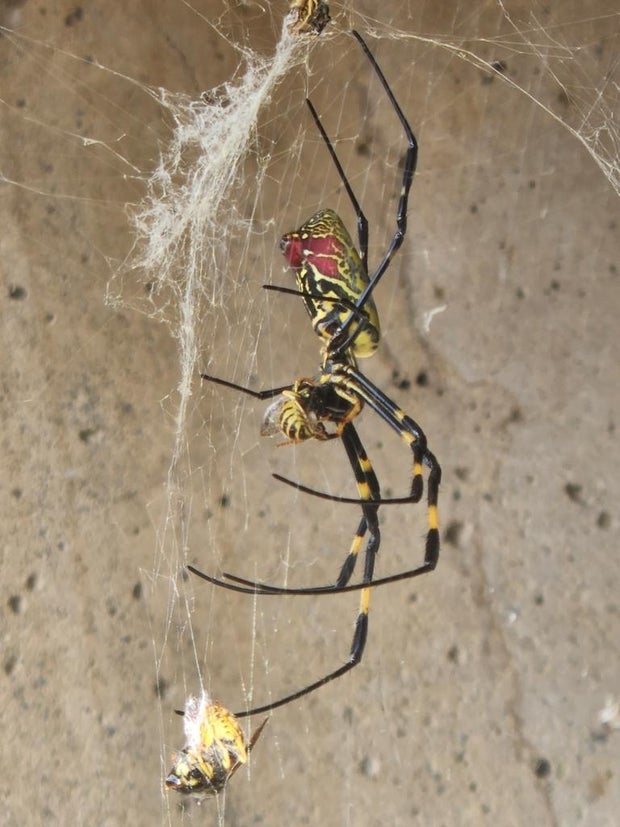The massive yellow-and-black-bodied critters known for parachuting through the air with their spidey strings are headed north, researchers say. And people across the East Coast are sharing images of what the Joro spider invasion looks like from their own backyards.
Joro spiders were first spotted in Georgia in 2014, but experts believe they may have arrived as early as 2010. Since then, they’ve rapidly spread across the South, with observations reported across more than half a dozen states. Researchers believe they are bound for the Big Apple, and that “it is a matter of when, not if” these arachnids land in New York and New Jersey — but don’t worry, they’re super shy and will likely freeze up for more than an hour if you disturb them, giving ample time to get away from their four-inch leg span.
Here are photos of what people are seeing across the U.S.
Georgia
j_jenkins53 | iNaturalist
Georgia is where Joro spiders — an invasive species from Asia — were first detected in the U.S. But since their discovery, they have hopped on human transportation and used their silk to parachute through the sky and land far from this origin.
North Carolina
branwhee | iNaturalist
There isn’t anything itsy-bitsy about this spider. Females can grow to have a leg span of up to 4 inches — nearly the size of the average woman’s hand.
South Carolina
anthony296 | iNaturalist
Joro spiders may be big, but their webs are even bigger. One researcher said he’s seen webs as wide as six feet, while others have said their webs can be more than 10 feet wide.
Tennessee
Tim Lenz/iNaturalist
Most of the Joro spiders people have documented appear to be females, which are bigger than adult males and more brightly colored, with vivid yellow and gray bodies with yellow bands on their long legs. They are also known to lay 400 to 500 eggs in a single sac, with spiderlings emerging around June, according to PennState Extension.
“Ballooning spiderlings can travel tens to hundreds of miles, especially if they are picked up by strong winds and storms,” PennState says.
West Virginia
Hila Taylor/iNaturalist
Joro spiders do have venom, but so far, there is no evidence showing that they are dangerous to humans or pets. Researchers say it’s likely that their fangs can’t even pierce the skin if given the chance, and that when disturbed, they’re known to freeze for more than an hour. Researchers at Clemson University have even noted that this species is among the “shyest” of spiders.





